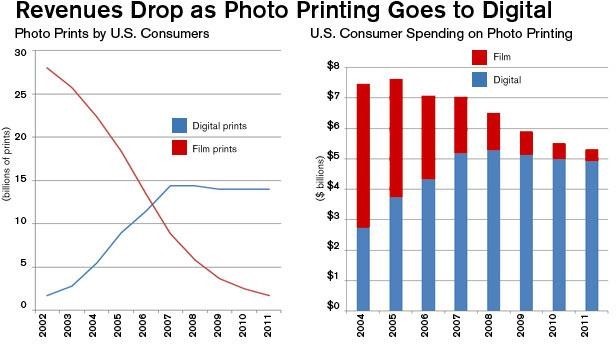 Let me start off by telling you that I have created a soon-to-be-released board game called “Pessimystic– the board game for pessimists”.
Let me start off by telling you that I have created a soon-to-be-released board game called “Pessimystic– the board game for pessimists”.
The objective of the game, and this series of blogs, is to topple the long-standing myth that Optimists are shining stars and Pessimists are sour-puss losers.
Leading a team, an organization, or a nation, requires a range of skills and personal qualities. There are many programs available which teach leadership skills as they apply to a host of disciplines. The skills covered usually include decision- making, team motivation, problem-solving, etc. There are also usually sections on leadership qualities such as vision,
empathy, accountability, etc. What these leadership training programs are telling us is that there are skills which can be learned and there are also certain personality traits which most successful leaders possess.
Optimism versus Pessimism never seems to come up, which is a relief because I’m sure there would be plenty of blathering about the advantages of optimism. Let’s take at the look at the disadvantages of optimism, shall we?
We will discuss three examples
- Kodak’s CEOs’ handling of digital photography
- Blockbuster’s CEOs’ handling of internet movie rentals
- Former President Donald Trump’s handling of the Coronavirus Global Pandemic
I would like to preface by stating that the intention of this newsletter is not to disrespect the leaders presented in the three examples. However, the intention is to point out that these leaders appear to be Optimists and/or took a very optimistic approach to serious assaults on the organizations which they were responsible for. If we were to conclude that they were Optimists, we should then be able to conclude that their optimism was the leading cause of their failures.
Kodak (1889 – 2012)
In the pre-digital era people had one or more cameras in which was inserted a roll of film for 24 or 36 pictures. The roll of film cost between five to ten dollars. Once all of the pictures had been taken, the roll of film was removed and taken in to a film processing provider for processing. The processing cost another ten to twenty dollars for a small print of each picture, and additional copies cost extra. Some vendors offered while-you-wait one hour processing but usually the roll of film was dropped off and then another trip was required to pick up the pictures. As of 1976, Kodak commanded 90% of film sales (including processing) and 85% of camera sales in the U.S. (By 2012 the company was bankrupt).
What’s interesting about Kodak is that at their peak of profitability in 1975, one of their own research engineers (Steven Sasson) invented digital photography. From 1975 onwards, the CEOs of Kodak knew that they were sitting on an invention that would destroy their super-profitable business. What should they have done and what did they do?
A Pessimistic CEO would have recognized that this invention will eventually completely destroy the value of our current lineup of products and services. We must transition to become the leaders in digital photography. Needless to say, digital photography will be much less profitable because there are no costs for film or processing but there will be new applications of digital photography.
The Kodak Optimistic CEOs appear to have done nothing, hoping that no one else would discover digital photography. It wasn’t until almost twenty years later, when there were many other players in the digital photography space, when Kodak accepted the inevitability of digital photography by offering photos on CDs which could be viewed on computers. They tried to get in with digital scanners/copiers and digital cameras but it was too little too late. Starting in 2002 digital cameras became a standard feature on mobile phones and Kodak was a dead duck.
 |
* MIT Technology Review, December 2011
Blockbuster (1985 – 2010)
What Blockbuster and Kodak had in common is that both of their business models were very profitable but were also very user-UNFRIENDLY. If you decided to rent a movie you had to go to the Blockbuster store on that day, pick the movie off the shelf (if they had it) and take it to the counter, and they would give you the VHS tape or DVD. You watched the movie that evening and then had to go back to the store the next day and drop it in a return bin. If you didn’t return it on time, you were charged a significant penalty per day.
What’s interesting about Blockbuster is that in 2002, as they approached their peak of $5.9B in revenues in 2004, they rejected an opportunity to buy Netflix. The two founders of Netflix practically begged the CEO of Blockbuster to buy half their company and he blew them off. At the time, Netflix provided a DVD rental by mail service in which subscribers paid a monthly fee and could rent as many movies per month as they wanted (one at a time). Netflix had recognized that customers wanted a more convenient way to rent movies. Also in 2002, another player in the movie rental biz, Redbox, had also recognized the need for a more user-friendly movie rental model by offering rentals through automated vending machines.
The Blockbuster CEO, it appears, had not recognized a need to change. Why not? Attributes of the Optimistic Leader
- Complacency – the good times will continue to roll
- Over-confidence – competitors/rivals don’t have a chance at beating you
- Asleep-at-the-wheel – CEOs steer the ship in their chief responsibility of stewardship of the organization
- Minimizing or ignoring problems – deemed unlikely and/or of little consequence
I propose that every attribute listed above applies to the Blockbuster CEOs. Netflix, of course, went on to become huge because they focused on identifying and solving the problems with the current movie rental processes. Pessimists continuously identify risks and problems and develop solutions.
Former U.S. President Donald Trump (2017 – 2021)
Let me repeat that this not intended to disrespect a former President of the USA. Over 400,000
Americans died from Covid under Trump’s leadership, which at the time was 20% of the worldwide death total in a country whose population is less than 5% of the world’s total population. Can we all agree that his handling of the Covid pandemic was a complete failure?
If we were to conclude that Trump’s approach to handling the Covid pandemic in the USA was because
he is an Optimist, then this would be an example of why Optimists are not effective leaders of nations.
By definition, Optimists look on the bright side, they expect that problems are minor and will solve
themselves. Optimists don’t worry because they feel everything will work out just fine.
Trump downplayed and dismissed the pandemic until it was undeniable. If one were to ask what would an Optimist say during the outbreak of a pandemic the quotes from then-President Donald Trump fit perfectly.
- January 22 2020: “We have it totally under control. It’s one person coming in from China, and we have it under control. It’s going to be just fine.”
- February 10 2020: “Looks like by April, you know, in theory, when it gets a little warmer, it miraculously goes ”
- February 24 2020: “The Coronavirus is very much under control in the USA. … Stock Market starting to look very good to me!”
- February 27 2020: “It’s going to ”
- February 27 2020: “It’s going to disappear. One day, it’s like a miracle, it will ”
- March 4 2020: “Some people will have this at a very light level and won’t even go to a doctor or hospital, and they’ll get There are many people like that.”
- March 10 2020: “We’re prepared, and we’re doing a great job with And it will go away. Just
- stay It will go away.”
- March 15 2020: “This is a very contagious virus. It’s incredible. But it’s something that we have tremendous control ”
Come on – this is textbook optimism right out of The Optimists Handbook. It doesn’t get any more optimistic than this. And this approach was a complete failure – right?
In Conclusion: Leaders should be Pessimists
Every job, from a forklift operator on a loading dock to the CEO of a major corporation, requires identifying and solving risks before they happen, and that is why Pessimists are the superior human being.
Moving along

I look forward to hearing your comments on my conclusion
that former-President Donald Trump’s poor handling of the Coronavirus pandemic may have been due to his extreme optimism.
If you are interested in the game there are links to additional info below.
If you are mildly interested you might want to sign up to receive future newsletters.
As a pessimist myself, I, of course, don’t really expect the board game, or this blog, or the campaign to redeem the reputations of pessimists, to become successful. But hey, ya never know, even pessimists are occasionally wrong.
Thanks for your attention. Yours truly,
The Happy Pessimyst
I shall return. Although, something bad might happen which prevents my return.
Email: pessimysticbgame@gmail.com

The very next time I read a blog, I hope that it does not fail me just as much as this one. I mean, I know it was my choice to read through, however I really thought you would probably have something interesting to talk about. All I hear is a bunch of moaning about something you could fix if you were not too busy searching for attention.} {visit site|visit my web site|visit the following page|visit site|visit the following webpage|visit|visit link|visit my home page|Visit Home Page|visit the following site
Hello, I don’t understand your negative comment. What does this mean? – “All I hear is a bunch of moaning about something you could fix if you were not too busy searching for attention.”
The blog about Leadership provides three real-life examples of Leaders who failed miserably because they were optimistic about approaching threats.